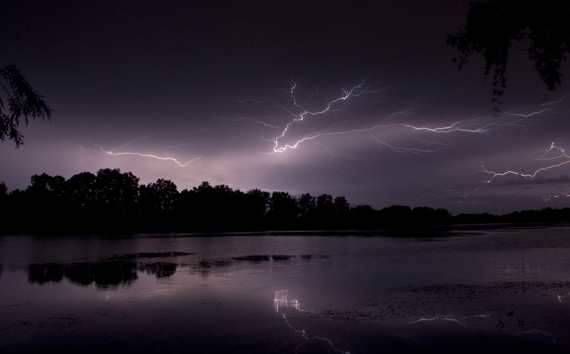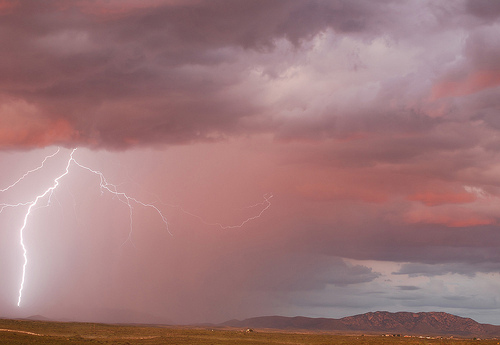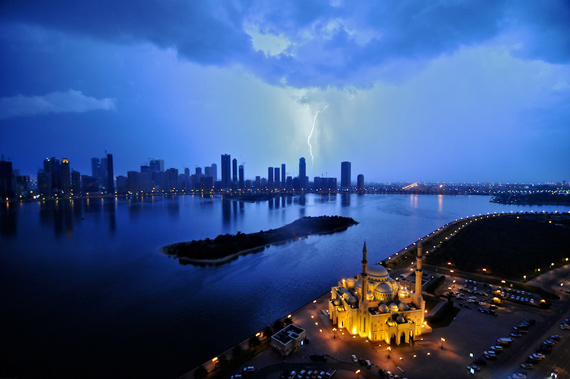Lightning photography is self-explanatory: photographing lightning. Because lightning is a very unpredictable force of nature, the actual process of photographing lightning presents unique challenges to photographers (similar to other night photography situations). It is, however, possible to be an outstanding lightning photographer if you are equipped with the necessary skills. Below are 8 useful tips that will help you capture stunning lightning shots:

“Lightning Strike at Fischer Panoramic” captured by Robert Carl
1. Use a tripod or steady surface.
This is one of the most important tips to consider. Although a tripod works best, any steady surface will do the trick. Because lightning is accompanied by storms, it is obvious why a tripod or steady surface is important.
2. Consider long shutter times.
Lightning is unpredictable; it is very hard to make decent captures tripping the shutter every time you see a flash. For this reason, you should consider investing in a good camera with slow shutter speeds, preferably 30 seconds.

“Approaching Storm” captured by John S.
3. Set the horizon.
Most lightning action takes place in the sky. For this reason, the field of view must be set from the horizon up or skewed to the sky. Depending on how close lightning strikes, you will be including more blank sky than normal. You shouldn’t worry about this, because the sky will be more exciting when lightning strikes.

“Daylight” captured by Steven Maguire
4. Include something interesting.
Although the main focus should be on the sky, you shouldn’t forget to include something interesting in the frame to give your photo relevance and/or perspective. For instance, you can choose to include buildings or vegetation or other things that show how big a storm is.

“Untitled” captured by Sohail Nakhooda
5. Use manual focus.
It is better to use manual focus when taking lightning photos, because lightning is best seen at night when there is enough darkness. Instead of letting your camera hunt for focus automatically when taking every new shot, get a suitable manual focus and leave your camera there.
6. Set shutter speed and aperture manually.
If you are using a camera with the ability to set shutter speed, pick a suitable shutter time like mentioned above and choose a fairly wide aperture. The depth of field should be shallow unless you have nearby objects you would like to include.
7. Consider using stacking software.
This tip is useful if you succeed in capturing steady shots one after the other. You can use stacking software to combine multiple images into one. Most spectacular lighting photos are a a result of stacking, because a single strike usually captures faint cloud action or a single lightning strike.
8. Exercise patience.
This is the last most important tip to consider about lightning photography in this list. Because lightning is unpredictable, you have to be patient. You also need to prepare yourself for multiple camera adjustments in an effort to capture the best shot.
About the Author:
Swee Shiong Chong writes for SG East Photo, a photography blog on techniques and equipment that is used in creating all types of photography from around the world.
For Further Training:
Landscape photography in low light can be be difficult to capture, but it holds the potential to reveal images way beyond what can be seen by the human eye.
Ending soon here: The Night Landscape Photography eBook Deal
Go to full article: Lightning Photography: 8 Important Tips To Consider
What are your thoughts on this article? Join the discussion on Facebook
Article from: PictureCorrect